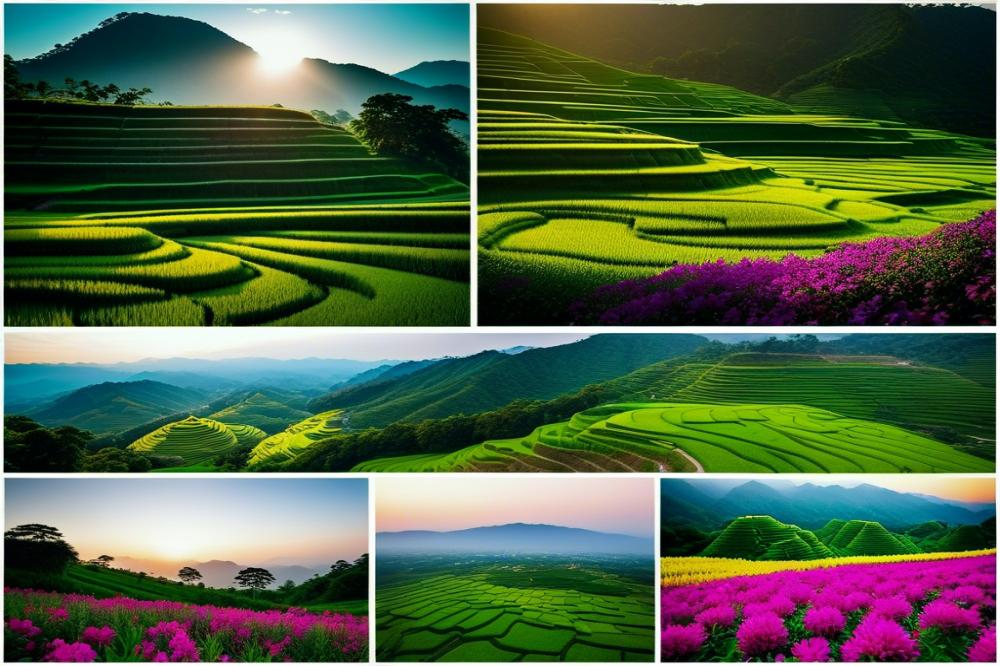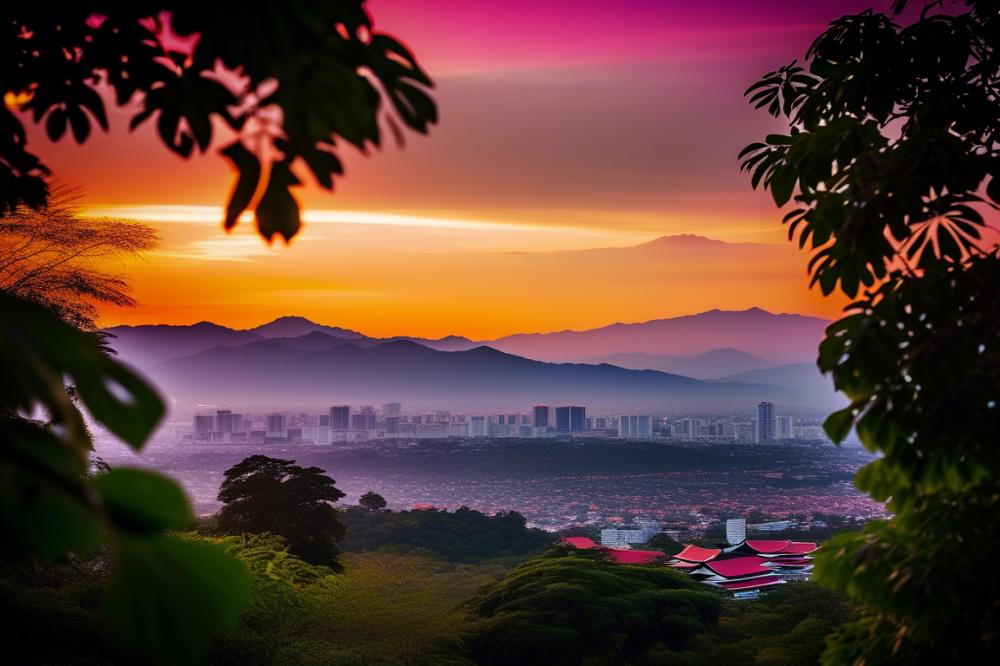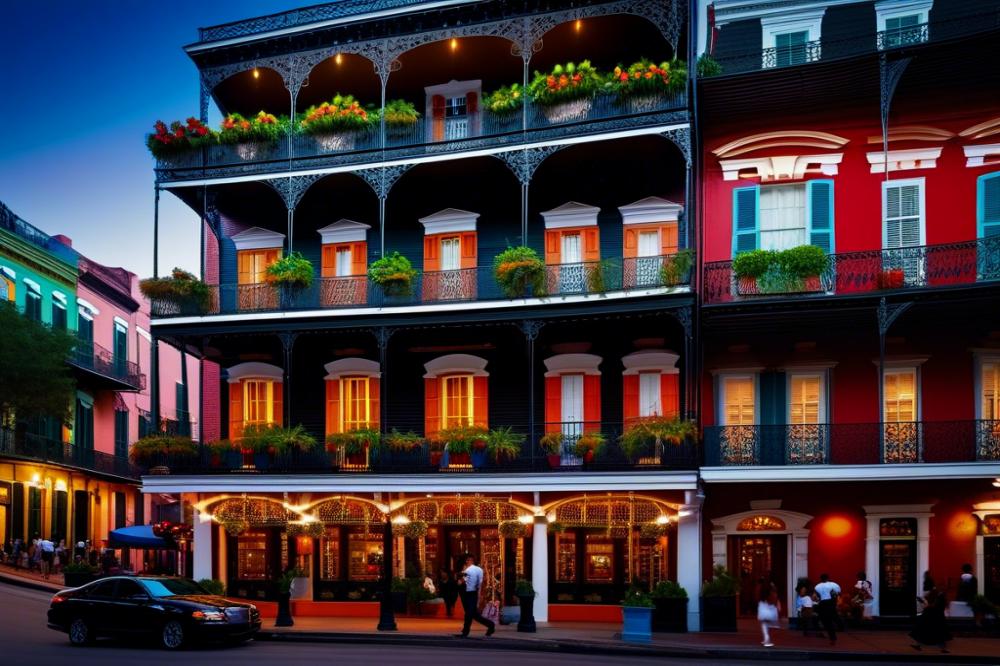Introduction
The Lanna Kingdom, a historical and cultural gem, has shaped much of Northern Thailand‘s identity. Established many centuries ago, this kingdom boasts a rich tapestry of history that revolves around its vibrant traditions and diverse communities. Chiang Mai, the most notable city in the region, stands as a testament to this heritage. It serves as a hub for visitors and locals alike, attracting those eager to explore its heritage.
Chiang Mai plays a pivotal role in the cultural landscape of Northern Thailand. The city is known for its striking temples and charming architecture, reflecting deep-rooted spirituality and artistic expression. Many travelers visit to experience traditional festivals, where local customs come alive through vibrant parades and lively performances. Delve into the local cuisine, featuring delectable dishes that showcase the region’s flavors. Street stalls and family-run restaurants abound, serving everything from khao soi to sticky rice.
Among the many attractions, the handicrafts of the area highlight the incredible skills of various ethnic groups. Hill tribes contribute to the diverse fabric of Chiang Mai culture, with their unique crafts and practices adding depth to the city’s offerings. Such cultural richness is not merely for show; it fosters a sense of community and belonging among the inhabitants.
This article aims to guide adventure seekers through the must-see locations and experiences in Chiang Mai. Uncovering the myriad tourist attractions of the area, readers will gain insight into how to savor the authentic essence of this beautiful region. As you navigate the captivating world of the Lanna Kingdom, prepare to engage with a legacy that invites exploration and appreciation.
Lanna Kingdom History

Origins of the Lanna Kingdom
The Lanna Kingdom first emerged in the 13th century in Northern Thailand. It grew around the city of Chiang Mai, founded in 1296. This period marked a significant phase for the region’s development. The kingdom was known for its strategic location along trade routes. As a result, it attracted merchants and travelers from various areas. Cultural exchanges from neighboring regions shaped the area’s identity over time.
Significant historical events and influences
Several key events define Lanna history. Early encounters with the Mon and Khmer cultures influenced art and architecture. The Mongol invasions in the 13th century also played a role. They led the kingdom to forge alliances, especially with neighboring states like the Sukhothai Empire. Later, Lanna became part of the Ayutthaya Kingdom in the 16th century, which brought another wave of transformation. The impact of colonialism was felt in the 19th century. Western powers sought control, leading to significant changes in governance and diplomacy. Cultural heritage was at risk, yet the preservation of traditions persisted.
Impact of history on contemporary culture
Today, Lanna’s rich history reflects in many aspects of daily life. Traditional festivals, such as Yi Peng and Songkran, showcase the region’s vibrant customs. Local cuisine features dishes that mirror ancient culinary practices. Distinct flavors and ingredients highlight an appreciation for local produce. Moreover, temples with Lanna architectural styles remain important tourist attractions. Handicrafts produced by local artisans provide insight into centuries-old techniques. Ethnic diversity enriches the cultural landscape, particularly the various hill tribes. Each group contributes unique traditions and perspectives, enhancing the communal tapestry. Overall, Lanna’s historical experiences resonate through art, dance, and community gatherings.
Cultural Heritage of the Lanna Kingdom

Traditional Festivals Celebrated in Chiang Mai
Chiang Mai comes alive during its vibrant traditional festivals. Major events include Yi Peng and Loy Krathong, where people release lanterns into the sky. This creates a breathtaking view that attracts many tourists. Another significant festival is the Songkran, or Thai New Year. Water fights and parades fill the streets during this time, showcasing the joyous spirit of the locals. Each celebration reflects deep-rooted traditions, making them crucial to the local identity.
Significance of Local Customs and Practices
Local customs play an important role in the daily lives of residents. Visitors often notice the warm greetings exchanged among people. Many rituals honor the ancestors and spirits, emphasizing respect for the past. Temples act as community centers, where people gather to celebrate and engage with their heritage. Handicrafts produced in the area also tell stories of the Lanna history. These art forms highlight the region’s rich cultural diversity.
Preservation of Lanna Culture in Modern Society
In Northern Thailand, modernization poses a challenge to traditional ways of life. However, many efforts are underway to safeguard cultural heritage. Community workshops teach younger generations about local cuisine and handicrafts. Ethnic diversity remains a strong point, with hill tribes contributing to the cultural mosaic. Local organizations work to promote and preserve the unique traditions of this area. Tourist attractions often showcase these practices, helping to fund preservation efforts and education. This ongoing commitment ensures that Lanna culture thrives in contemporary society.
Temples and Spiritual Life

Overview of Famous Temples in Chiang Mai
Chiang Mai is home to numerous famous temples that attract both locals and visitors. Wat Phra That Doi Suthep is perhaps the most iconic. Perched on a mountain, this temple offers stunning views and a rich history tied to Northern Thailand. Another noteworthy site is Wat Chedi Luang, known for its massive stupa and ancient architecture. This temple once housed the Emerald Buddha, a significant relic. Wat Phra Sing shines with intricate wood carvings and vibrant murals, embodying the artistic spirit of the region. Each temple tells a story, revealing deep connections to Lanna history and culture.
Architectural Styles Unique to the Lanna Kingdom
The architectural styles of temples in this area are distinct. They often feature intricate designs with tiered roofs and elaborate decorations. Dark-stained woods are commonly used, reflecting a traditional craftsmanship. The lotus motif frequently appears in architectural details, symbolizing purity and beauty. Temples display various colors, especially gold and deep reds, representing spiritual richness. Many structures are surrounded by lush gardens and statues of mythical beings. Hill tribes often contributed to the unique styles, blending their own traditions with Lanna elements. Such diversity creates a captivating visual experience.
Role of Temples in Daily Life and Spirituality
Temples play a crucial role in the daily rhythms of life in Chiang Mai. They are not just tourist attractions; they serve as spiritual havens for local communities. Many participate in traditional festivals held at these sacred sites. Locals gather for events, offering food, flowers, and even money to monks. Such acts strengthen community ties and reflect a shared cultural heritage. For many, visiting a temple is a way to seek divine guidance or find peace. Handicrafts around temples showcase local artisans, illustrating the blending of spiritual and economic life. Temples symbolize the region’s ethnic diversity, acting as a focal point for various hill tribes and their traditions. Daily rituals and celebrations infuse life with meaning in these communities.
Local Cuisine
Northern Thailand is home to a rich tapestry of flavors influenced by its unique geography and cultural heritage. Lanna history plays a vital role in the culinary traditions found in Chiang Mai. Dishes often showcase local ingredients that make every bite a reflection of the land. Fresh produce, herbs, and spices bring life to meals that are not only tasty but also connected to traditional festivals and local customs.
Introduction to Lanna Dishes and Ingredients
Recipes often highlight rice as a staple, served alongside an array of side dishes. Certain herbs, such as cilantro and lemongrass, feature prominently in meals. Curries, grilled meats, and sticky rice embody the essence of Lanna cooking. The incorporation of ingredients from nearby hills adds depth. Locally sourced vegetables and fruits burst with flavor, celebrating the region’s agricultural bounty.
Popular Foods to Try in Chiang Mai
When visiting Chiang Mai, one must not miss trying Khao Soi. This creamy, coconut-based curry noodle soup warms the heart. Sai Ua, a northern Thai sausage, offers a delightful mix of spices that awakens the taste buds. For those with a thirst for something special, try nam prik ong, a tomato-based chili dip perfect for pairing with fresh vegetables. Street food stalls serve these dishes, ensuring a memorable culinary experience.
Culinary Influences from Ethnic Diversity
The ethnic diversity of the region contributes significantly to local cuisine. Hill tribes have unique cooking techniques and flavors that intertwine with mainstream dishes. Recipes from the Karen, Hmong, and Lahu peoples showcase their distinct ingredients and traditions. This melding of cultures creates rich dining experiences for everyone. Visitors are often pleasantly surprised by the variety of meals available, each telling a story of its own.
Handicrafts and Artisanship
Northern Thailand is rich in handicrafts that reflect the region’s cultural heritage. In the Lanna Kingdom, traditional crafts have thrived for centuries. Skilled artisans create beautiful products using age-old techniques passed down through generations. Visitors can find intricately woven fabrics, stunning silver jewelry, and exquisite wood carvings. Each piece tells a story of Lanna history and traditions.
Traditional Crafts of the Lanna Kingdom
Cotton weaving is one of the most celebrated crafts here. Many hill tribes engage in this art, producing vibrant textiles adorned with intricate patterns. Pottery is another important craft, often featuring designs that showcase the cultural identity of local communities. The art of basket weaving also stands out, enabling artisans to create functional and decorative pieces that serve multiple purposes.
Important Markets and Where to Find Local Handicrafts
Markets in Chiang Mai are perfect for finding local handicrafts. The Sunday Walking Street Market is a favorite among tourists. Visitors wander through stalls filled with handmade goods while enjoying traditional festivals and local cuisine sold nearby. Night Bazaar also offers a wide range of products, from clothing to art. Bargaining is common, so haggling can lead to great deals.
Impact of Handicrafts on Cultural Identity
Handicrafts play a vital role in shaping cultural identity in this region. They reflect the diverse ethnic backgrounds of the local population. Each craft embodies the customs and beliefs of various communities, including hill tribes and ethnic minorities. Through their work, artisans preserve important cultural traditions for future generations. Tourists often bring these handmade items back home, keeping the heritage alive far beyond Northern Thailand.
Temples often showcase local artwork, reinforcing the connection between spirituality and craftsmanship. Many artisans view their work as an extension of their cultural roots. While modern influences grow, traditional skills remain at the heart of the community’s identity. The vibrant handicraft scene contributes significantly to Chiang Mai’s appeal as a tourist attraction, drawing visitors interested in authentic experiences.
Ethnic Diversity and Hill Tribes
Northern Thailand is a vibrant tapestry of cultures, primarily influenced by various hill tribes. This region is home to many ethnic groups, each with its own rich traditions. The Karen, Hmong, Lahu, and Akha tribes, among others, coexist within this mountainous landscape. Their unique ways of life add depth to the cultural heritage of the area.
In Lanna history, relationships between hill tribes and local communities have always been significant. Many of these groups participate in traditional festivals that showcase their customs. These celebrations provide a platform for cultural exchange, where local cuisine and crafts are shared. It is common to find visitors enjoying traditional dances, vibrant clothing, and unique handicrafts. These experiences enrich not only the tourists’ understanding but also strengthen community ties.
Tourist attractions in Chiang Mai often emphasize the importance of these hill tribes. Many tour operators provide opportunities for visitors to interact with these communities. Activities may include guided tours through villages or participation in local events. Travelers frequently describe these encounters as memorable. They appreciate learning about traditional crafts, such as weaving and silverwork. Connecting with locals over a meal can reveal stories and insights about their lifestyle.
Temples dot the landscape, serving as spiritual centers for both the hill tribes and Thai people. Many tribes practice different beliefs, yet there exists a shared respect for spirituality. Festivals at these temples often blend elements from various cultures, creating a communal atmosphere. This rich environment promotes dialogue and understanding among different ethnic groups.
Food also plays a crucial role in defining the cultural landscape. Each hill tribe has its own specialties that reflect their environment and history. Ingredients often include fresh vegetables and aromatic herbs unique to the region. As visitors sample these dishes, they gain a deeper appreciation for the culinary diversity present in Northern Thailand.
Overall, the ethnic diversity represented by the hill tribes adds richness to the cultural fabric of Chiang Mai. The interaction between tribes and the local community illustrates a beautiful blend of customs. This environment not only attracts tourists but also supports the preservation of a way of life that has thrived for generations.
Tourist Attractions in the Lanna Kingdom
Must-visit places in Chiang Mai
Chiang Mai boasts a rich array of attractions. The iconic Wat Phra That Doi Suthep stands high above the city. Visitors can hike up or take a songthaew to reach this sacred temple. Stunning views await at the top. Just a few minutes away, the Old City holds the ancient temples of Wat Chedi Luang and Wat Phra Singh. Each temple reflects Lanna history and artistic style.
Night markets, like the Sunday Walking Street, offer a lively atmosphere. Stalls filled with handicrafts and local dishes line the streets. A visit here is a must for those wanting to taste local cuisine. Strolling through the markets is an experience in itself. Artisans display their talents, and you can find handmade goods unique to the region.
Cultural tours and experiences available for visitors
Cultural tours provide insight into the traditions and lifestyles of the people. Many organizations promote ethical and educational experiences. Workshops on traditional crafts allow tourists to learn skills from local artisans. Participating in a cooking class can be a delightful way to engage with Lanna cuisine.
Traditional festivals throughout the year create vibrant atmospheres. Yi Peng and Loy Krathong are spectacular events. Lanterns fill the night sky, and locals celebrate with rituals and dances. Joining these festivities offers a glimpse into the region’s cultural heritage and communal spirit.
Advice for responsible tourism in the region
Travelers should respect local customs and traditions. Learning a few words in Thai can create a connection with the friendly people. When visiting temples, modest clothing is appreciated. This small gesture shows respect for the local culture.
Support local businesses by purchasing handmade goods directly from artisans. Engaging with the hill tribes in an ethical manner is crucial. Seek out tours that prioritize fair treatment and benefit the communities. Protecting the environment should also be a priority. Dispose of waste properly and minimize plastic use.
Visitors play a vital role in preserving the cultural diversity of Northern Thailand. As you explore, be mindful of your impact. Engaging thoughtfully with the local culture enriches the travel experience for everyone.
Final Thoughts
The cultural richness of the Lanna Kingdom in Chiang Mai is truly remarkable. Visitors find themselves drawn into a world filled with ancient traditions, stunning architecture, and vibrant local festivals. The unique blend of history and modern influences creates a captivating atmosphere. Exploring Chiang Mai offers an opportunity to witness this captivating heritage firsthand.
Traveling through Northern Thailand allows for a deep appreciation of Lanna history, which is shaped by its distinct customs and practices. Each temple tells a story, and each festival celebrates the community’s spirit. Engaging with the local people can provide insights into their way of life. This interaction enriches your understanding of the region.
Those planning a trip should venture beyond the typical tourist spots. Consider visiting rural areas where age-old traditions are still practiced. Markets filled with local crafts and food can provide a genuine glimpse into the culture. Not only does this make for an enjoyable experience, but it also supports the local economy.
While on holiday, remember the importance of cultural appreciation. It’s easy to get swept away in the sights and sounds of a new place. Taking the time to learn about local customs and traditions can make your journey even more meaningful. In summary, Chiang Mai is a treasure trove of heritage waiting to be discovered.



